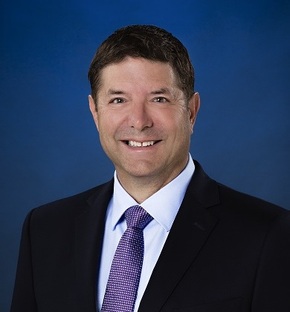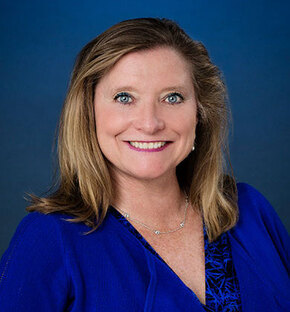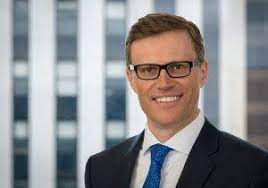The ongoing COVID-19 global pandemic’s impact on the A/E community has been, at best, unsettling. With due recognition of the countless personal and professional tragedies experienced and to be experienced, here, we will focus primarily on the impact of COVID-19 on construction litigation and some potential contractual tools to consider to mitigate against this and potentially future pandemics.
Clearly, the construction industry at large has suffered from the additional burdens and public policy implications COVID-19 has had on ongoing and planned projects. National organizations such as the AIA and ASCE have cited factors such as funding delays, intermittent and unpredictable suspensions of work, shortages in material and labor, and often confusing and haphazardly enforced health precautions having a profound and adverse effect on both design and construction activities. Contractual, legal, and insurance aspects (i.e., the potential impact of force majeure clauses, the determination of excusable and non-excusable delays, and “for cause” terminations) are amongst the areas of primary concern. The depth and breadth of issues are well beyond those that can be addressed here, but we can (and hopefully do) provide some meaningful background information from a legal perspective and some practical mitigation suggestions.
Impacts on Construction Litigation
“Justice delayed is justice denied”
Simply put, if you have or expect to have an affirmative claim as against your client or others (fee claims, copyright violations, etc.), justice will be delayed.
Access to the California judicial system is the subject of both “Orders” from Governor Newsom and from Presiding Judges for each county.
- Overview of State and Local Rules of Court
- With the COVID-19 closures and stay-at-home orders, the Court system throughout California and the nation have been forced to deal with substantial delays to all aspects of the judicial system. There is a constitutional requirement for “speedy” criminal trials and practical considerations for fast-tracking divorce, child custody, and probate matters. With these priorities, civil litigation of all stripes, including construction litigation, has come to almost a complete standstill. Courts are setting trial dates up to three years down the road (typically 18-24 months), and there is substantial concern that even those trial dates will need to be pushed back.
- Beyond the inherent delays, COVID-19 has also dragged litigation procedures into the 21st Century, though with much gnashing of teeth. At the outset of the pandemic, the California Judicial Council passed a series of emergency rules which set out how to conduct litigation when many attorneys and their staff were not allowed in their offices and people were not allowed to congregate. These rules included the requirement that attorneys accept electronic service of documents (via email instead of US Mail) and allowed for witnesses to appear remotely for depositions. Many of these emergency rules have now been converted into statute, and now Court hearings and video depositions using Zoom, Microsoft Teams, WebX and others are now the norm throughout the State.
- Further, each Court has, or is in the process of developing, their own local rules in an effort to practically account for the social distancing requirements in largely antiquated courtrooms, public corridors and even elevators.
- Practical impacts on litigation:
- Remote depositions are now the “new norm” and are well supported technologically. While many initially bemoaned the lack of control occasioned by the deponent being in a separate location, practically, they proceed without incident and serve their intended purpose. It should be noted that while there may be some cost savings involved as there is typically no travel required, preparation time, especially in document intensive cases will likely increase as documents (exhibits) need to be pre-organized and sometimes delivered in advance to the witness, and/or posted on the court reporter’s case website.
- Remote mediations are also now normal but, especially in complex multi-party cases, significantly less effective. While there are a multitude of variables, these mediations typically involve a brief “all party” session followed by individual sessions with each party who are, essentially, isolated from the other parties. One result of this is rather than engaging/cajoling with other parties and counsel around the snacks, each party sits in their own virtual room, often convincing themselves of the righteousness of their case assessments. The mediator then becomes the only point of connection between the parties, and their ability to assess the factual and legal issues and to persuade the parties as to the risks of their position becomes the only (or at least primary) means of reaching a compromise resolution. That is a heavy load and as a result, while many cases still settle, the more complex and litigious matters often become more so.
- Remote trials are amongst the suggestions being contemplated by Trial Judges and parties with, as you might imagine, lukewarm reactions. Initially, it is highly doubtful that remote Jury Trials will happen as the jury pool’s access to technology is severely compromised (see the failings of online education amongst the underprivileged) and high-speed reliable internet access, not just computers/tablets, would be required. However, the potential for remote non-jury Trials is a distinct possibility, subject to technological upgrades.
- It should be noted that remote Arbitrations are becoming more common and efficient and many parties in construction litigation are voluntarily seeking alternative dispute resolution processes, including binding Arbitration, even when the applicable written agreements do not call for it. The hope is that private Arbitrations will give the parties some semblance of justice without having to wait a currently unknowable period of time.
- Finally, while fairly unique, private Trials or Trials by reference have been utilized on large/lengthy/complex matters and they may become more prevalent as the possibilities of a Jury Trial remain remote. All of the regular Court rules would apply, but the costs could be prohibitive as the parties would have to front all costs for room rentals, jury fees, technological support and administrative personnel. While we have yet to see this happen, if Arbitration is simply inappropriate, Private trials may/could be an option.
Potential COVID-19 Mitigation Tools
At least two contractual tools should be considered if not implemented:
- Expanded Force Majeure Clauses
The “act of god” contract avoidance provision known as a force majeure clause can be useful to escape some of the effects of the COVID-19 related shutdowns. However, many of the AIA form contracts do not contain a force majeure provision and many of the industry standard agreements do not include a force majeure provision that would include COVID-19 and related shutdowns. Going forward, we recommend adding force majeure provisions to all contracts which include a specific reference to “pandemics, epidemics, and plagues”.
A party may also consider adding additional contractual provisions for aggressively resolving disputes privately between the contracted parties during the course of the project in order to avoid protracted litigation, which may take years to resolve. Obviously, the final resolution should be reviewed by your local counsel to ensure you have been properly protected.
- Court v. Arbitration
As set forth above, while the judicial system may be 2-5 years (if ever) from fully recovering from the pandemic, Arbitrations are proceeding with increased frequency, and reasonably well. Those concerned about the lack of meaningful appellate rights in Arbitration should note that the AAA has a procedure for Appeals of Arbitration awards and recommended contract language.
Conclusion
As the Court systems continue to be disrupted, parties are seeking alternative methods of resolution with some modest success. It is anticipated that lingering effects of COVID-19 on the Court will go on for years and the parties should adjust their contractual provisions accordingly.
Author Information
Murtaugh Treglia Stern & Deily, LLP is an Orange County, California based law firm proudly serving the A/E community for over 40 years. For more on the firm please visit us at https://www.murtaughlaw.com/

Lawrence A. Treglia
Senior Partner
Murtaugh Treglia Stern & Deily LLP Visit >
2603 Main Street, Penthouse
Irvine, CA 92614
ltreglia@murtaughlaw.com
p: (949) 794-4000

Madelyn A. Enright
Senior Partner
Murtaugh Treglia Stern & Deily LLP Visit >
2603 Main Street, Penthouse
Irvine, CA 92614
menright@murtaughlaw.com
p: (949) 794-4000








 In mid-November, F. David Shipley passed away. He was 81 years old.
In mid-November, F. David Shipley passed away. He was 81 years old. Next year, a/e ProNet will celebrate its 30th Anniversary. We’ve been around a long time, but we continue to be a dynamic organization. Now we’re proud to announce a new category of a/e ProNet membership.
Next year, a/e ProNet will celebrate its 30th Anniversary. We’ve been around a long time, but we continue to be a dynamic organization. Now we’re proud to announce a new category of a/e ProNet membership. At the end of this month, a/e ProNet will hold its annual meeting in Chicago for our members, affiliates, and sponsors. ProNet has held these fall meetings for more than two decades, but the goal and capacity of the meeting continues to evolve to meet the climate of the industry. This year, we’re proud to host
At the end of this month, a/e ProNet will hold its annual meeting in Chicago for our members, affiliates, and sponsors. ProNet has held these fall meetings for more than two decades, but the goal and capacity of the meeting continues to evolve to meet the climate of the industry. This year, we’re proud to host  University students around the country are heading back to class. We’d like to recognize one of them today. In May,
University students around the country are heading back to class. We’d like to recognize one of them today. In May, 